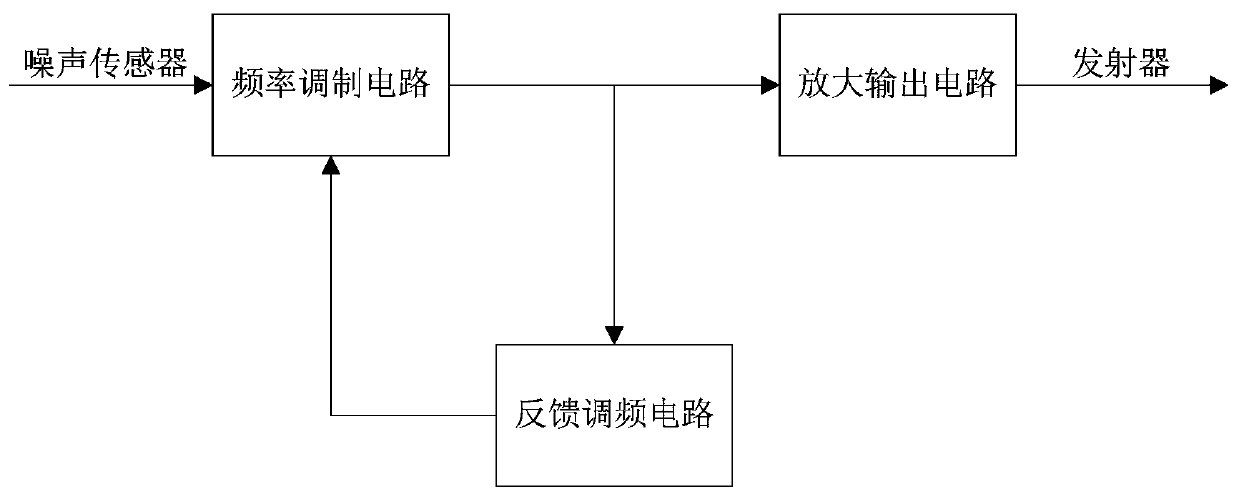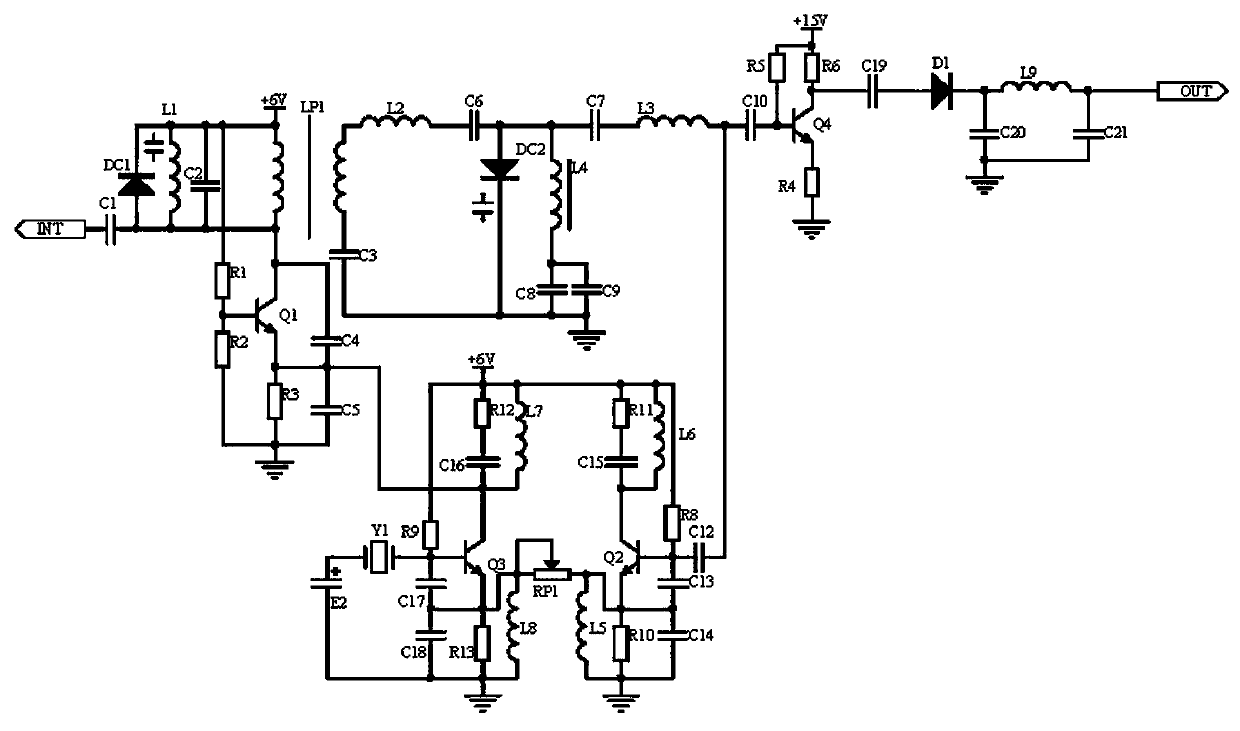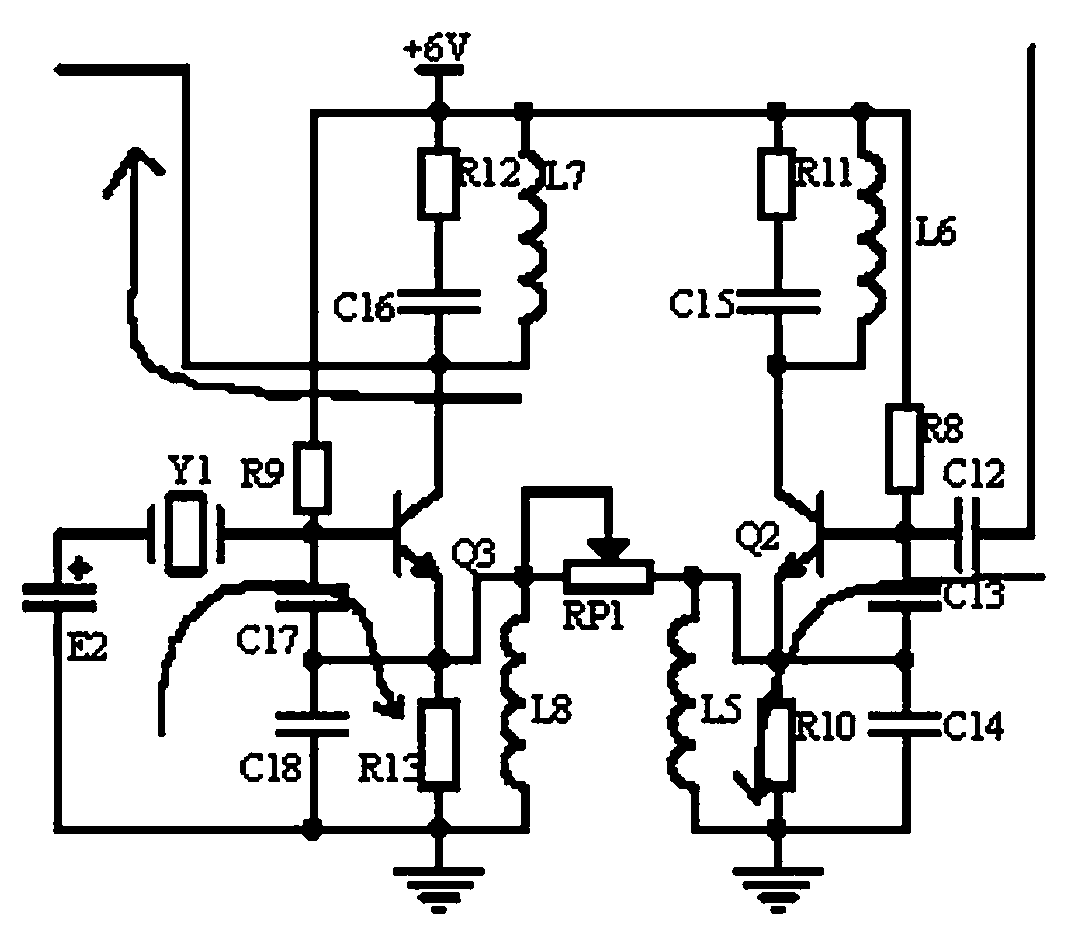A real-time transmission device for noise measurement data
A technology of real-time transmission and noise measurement, applied in the direction of measuring devices, using electrical devices, measuring ultrasonic/sonic waves/infrasonic waves, etc., can solve problems such as attenuation, signal transmission electromagnetic noise interference, etc., to reduce electromagnetic noise interference, improve accuracy, improve The effect of anti-interference
- Summary
- Abstract
- Description
- Claims
- Application Information
AI Technical Summary
Problems solved by technology
Method used
Image
Examples
Embodiment 1
[0014] Embodiment 1, a real-time transmission device for noise measurement data, including a noise sensor and a transmitter, the coal mine noise information measured by the noise sensor is transmitted to the noise monitoring server through the transmitter, so as to realize online monitoring and real-time transmission. A frequency modulation circuit, a feedback frequency modulation circuit, and an amplifying output circuit are also connected between the devices. The frequency modulation circuit receives the 200-1000Hz frequency signal output by the noise sensor of the GSD130 type, and passes through the varactor diode DC1, the capacitor C1, and the inductor L1. The composed adjustable resonant circuit resonates to generate a resonant frequency, obtains the frequency signal corresponding to the measurement noise, and then enters the 450MHz oscillating frequency generated by the LC oscillator with the core of the triode Q1, resistor R1-resistor R3, and oscillating coil LP1 for modu...
Embodiment 2
[0015] Embodiment 2, on the basis of Embodiment 1, the 200-1000 Hz frequency signal output by the noise sensor model GSD130 received by the frequency modulation circuit is passed through an adjustable resonant circuit composed of a varactor diode DC1, a capacitor C1, and an inductance L1 Carry out resonance to generate a resonant frequency, obtain the frequency signal corresponding to the measurement noise, and then enter the 450MHz oscillation frequency generated by the LC oscillator with the core of the triode Q1, resistor R1-resistor R3, and oscillating coil LP1 for modulation, where resistor R1 and resistor R2 are triode The base bias resistor of Q1, adjusting the value of the oscillating coil LP1 can adjust the oscillating frequency of the LC oscillator. After modulation, the signal passes through a varactor diode frequency multiplier composed of a varactor diode DC2, an inductor L2-inductor L4, and a capacitor C6-capacitor C9. After 2 frequency doubling, it is modulated t...
Embodiment 3
[0016]Embodiment 3, on the basis of Embodiment 2, the feedback frequency modulation circuit receives the output signal of the frequency modulation circuit, and uses the differential principle to calculate the frequency multiplier through the double-ended input and single-ended output differential circuit with transistors Q2 and Q3 as the core. The resonant frequency of the output signal (specifically, the output signal is coupled to the base of the transistor Q2 through the capacitor C12 after frequency multiplication, and the LC parallel resonant circuit composed of the emitter capacitor C14 of the transistor Q2 and the inductor L5 generates a resonant frequency. The capacitor C13 is connected in series with the capacitor C14. Pad capacitor, resistor R8 is the base bias resistor, resistor R11, capacitor C15, and inductor L6 provide a stable bias voltage for the collector) and the resonant frequency of the reference frequency signal (specifically, the 900MHz crystal oscillator Y...
PUM
 Login to View More
Login to View More Abstract
Description
Claims
Application Information
 Login to View More
Login to View More - R&D
- Intellectual Property
- Life Sciences
- Materials
- Tech Scout
- Unparalleled Data Quality
- Higher Quality Content
- 60% Fewer Hallucinations
Browse by: Latest US Patents, China's latest patents, Technical Efficacy Thesaurus, Application Domain, Technology Topic, Popular Technical Reports.
© 2025 PatSnap. All rights reserved.Legal|Privacy policy|Modern Slavery Act Transparency Statement|Sitemap|About US| Contact US: help@patsnap.com



